Arches for roses
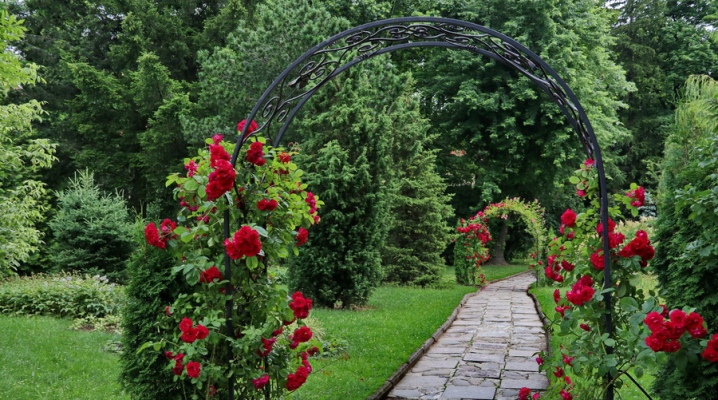
The arch allows the grower to make the garden more comfortable, inviting and organized. With its help, you can zone the space. Often, arches with roses are used exclusively for decorative purposes. So, they are placed along the paths, near the gazebos or verandas.
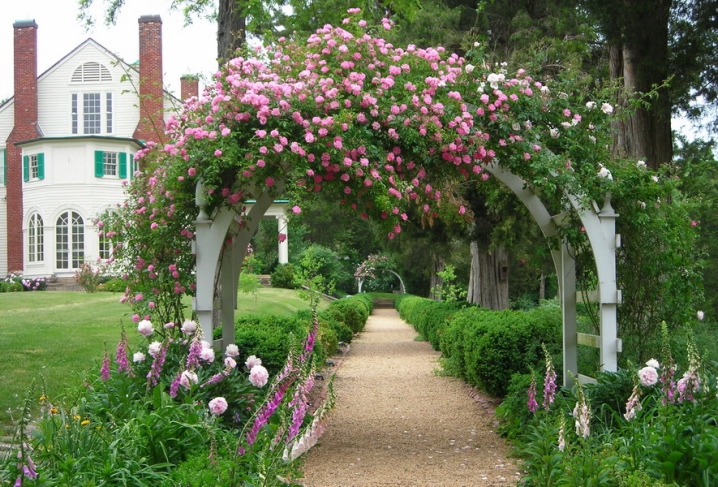
Peculiarities
Arches for roses allow you to beautifully arrange a place to relax. In the shade, you can put a bench with a small table for evening gatherings. As a result, the garden arch will turn into a real gazebo with the enchanting scent of roses. If you put them in a row, you get a stunning alley.
A garden arch for a climbing rose is not only decorative, but also functional.... It helps flowers to grow, because without support, they will simply lie on the ground. Usually roses are tied to supports in order to set the correct growth vector.
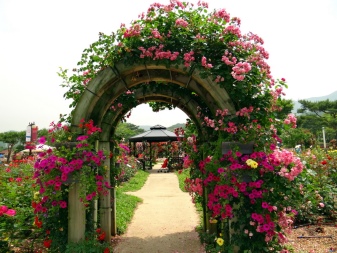
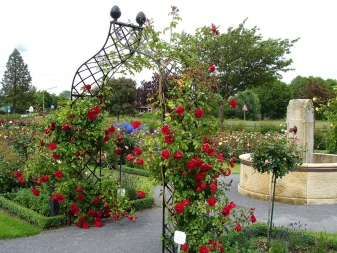
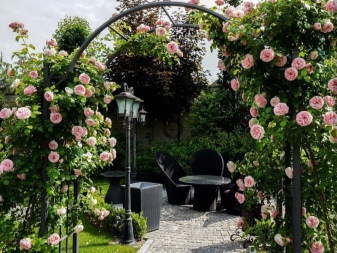
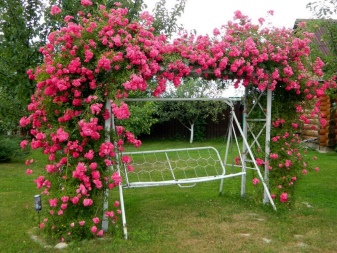
Let's list the main advantages of the design.
- The natural ventilation of the growing rose avoids disease and the formation of fungus.
- Flowers grow much faster because they get enough sunlight.
- The grower can easily take care of the rose - the arch provides full access.
- The variety of sizes allows you to choose something suitable for every occasion. A garden arch for a small garden can be very compact. This makes it possible to plant additional plants, which is very practical.
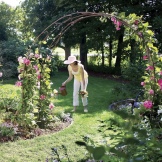
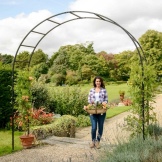
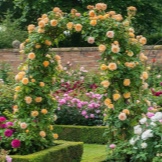
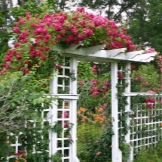
There is no need to talk about the high decorativeness of such an arch. The structure can have a variety of shapes, usually made of metal, wood or plastic. This garden decoration is the simplest.
Consider the key design features.
- The arch should be about 2 meters or more. Otherwise, the design will look cramped and uncomfortable. At the same time, gardeners prefer not to exceed the mark of 3 meters, otherwise the arch will become too bulky after it is entwined with roses.
- Additionally, you should understand the width. Here you should consider the size of the rose buds. Gardeners recommend making an arch at least 50 cm wide.Otherwise, after a while, the structure will look unkempt.
- The arch can be portable without support. In this case, high mobility allows you to move it around the garden. However, such an arch will not be able to support the weight of bulky plants.
- The design itself should be beautiful. In winter, when roses are not blooming, it is the design features that will decorate the garden. If you make a simple rounded opening, then the decoration will no longer fulfill its decorative function.
- A wrought-iron arch is suitable for a classic garden. Wooden models are often installed in a simple area with a typical Provencal design.
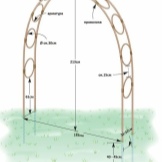
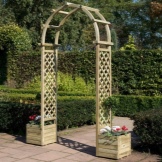
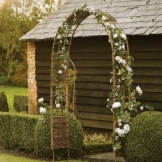

Species overview
Unusual and attractive arches decorate the space and serve as a support for roses. At the dacha, the structure can be combined with a bench or simply installed on the walkway. In the first case, the arch will also create a shaded area, which is very practical.
By type of placement, structures are conventionally divided into three types.
- Freestanding arch usually ennobles the entrance to the garden. This solution will allow you to divide the areas where vegetables and flowers grow. The insulated structure is often high (about 240 cm). A person in full growth should calmly walk under it.
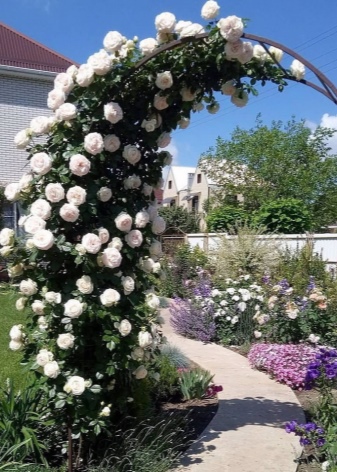

- Combined arches, which form a kind of tunnel. Looks interesting in a large garden.But in a small area, it is better to refuse such a decision - it will greatly clutter up the space.
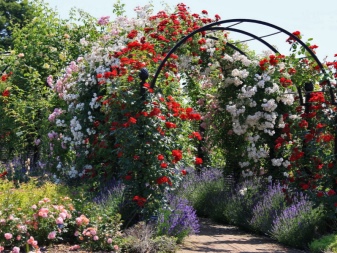
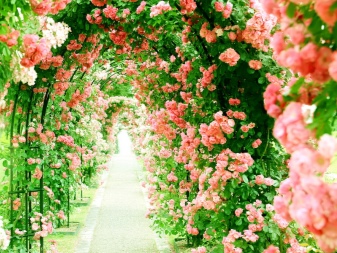
- Often an arch is attached to the house.... This allows you to decorate the wall and refine the recreation area. Nearby you can put a bench and a small table, garden swing. In some cases, you can make an extension, as it were, and supplement it with an arch.
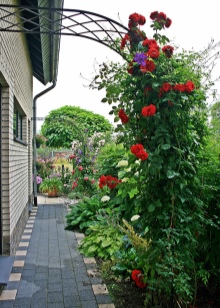
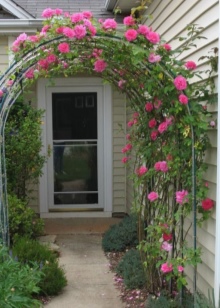
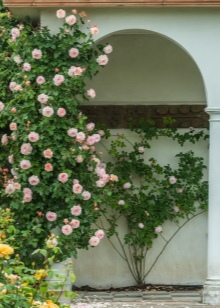
At the dacha, you can install completely different designs, each gardener selects something suitable for himself. Depending on the purpose and location, a certain shape of the arch is chosen. Moreover, often this characteristic is directly related to the material from which the structure is made.
Let's list the options for the forms.
- Normal arc. The classic version is usually installed in a flower bed to highlight it. The effect of a basket is visually created. At the base are two rods, transverse supports and the arc itself from above. Some of these structures are collapsible, they can be removed for the winter.

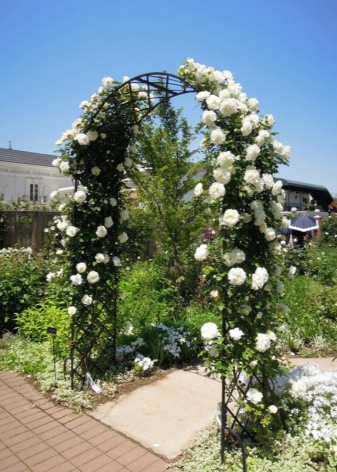
- Rectangular arch. The impression of a doorway entwined with roses is created. A good solution for decorating the entrance to the garden, gazebo and even to the house. The structure consists of pillars-pillars, which go deep into the ground, and a transverse rail. From above, you can make a grill or a visor. Suitable for decorating an opening in a living fence.
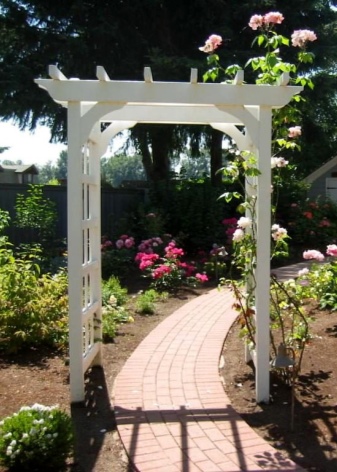
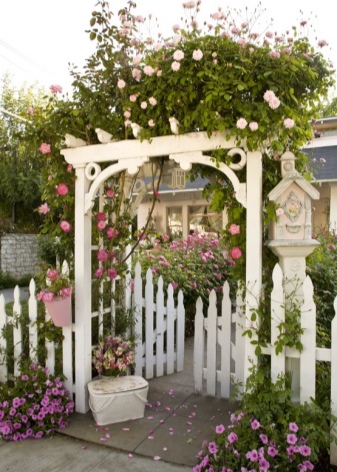
- Curly arches... This design also has simple straight supports, but the upper part is more decorative. It can have absolutely any form, everything is limited only by fantasy.
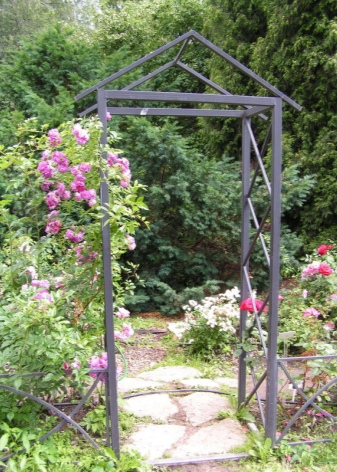

The size of the arch depends on its shape and place of use.... Before installing it, you should think carefully about everything. A stationary arch cannot be simply moved at will - this is a rather laborious process. The vertical construction gives the site completeness and integrity.
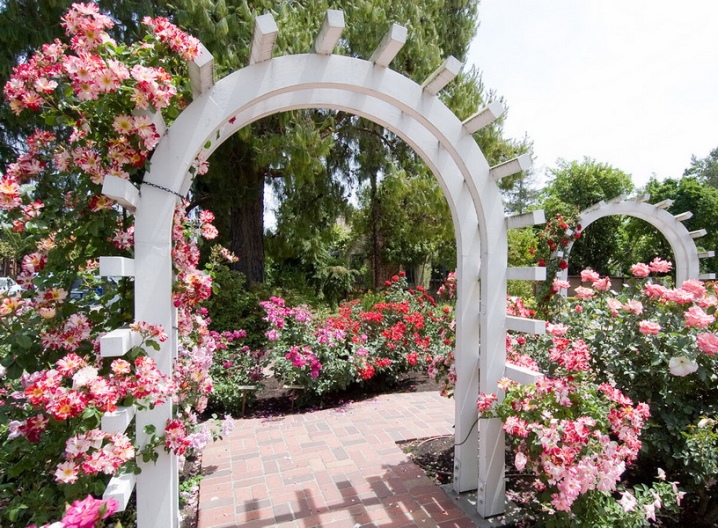
Materials (edit)
Arches can be purchased and homemade... Hence the variety of materials. Moreover, in some cases, they are even combined with each other to create the most effective support. So, metal can be used as a base, and the slats are already made of wood.
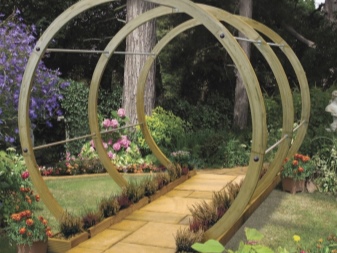
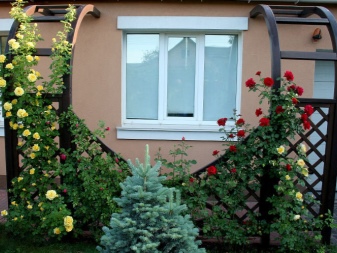
Stone is often used, but such designs should be entrusted to professionals. You should have certain knowledge and installation skills. More accessible material - plastic... Such an arch does not require any covering. Usually it has locking mechanisms, which allows you to fold the structure together with the flowers for the winter.
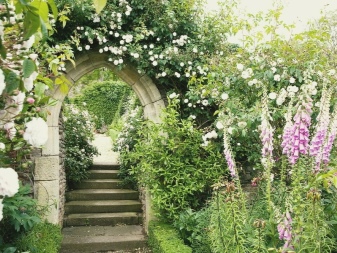
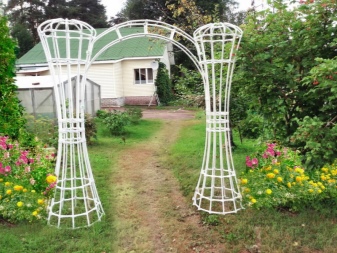
Combined arches can be endowed with those properties that are more important for the gardener. It also allows you to best fit the structure into the overall design. However, the most popular are still wood and metal... They are reliable and easy to install, able to withstand the weight of roses.
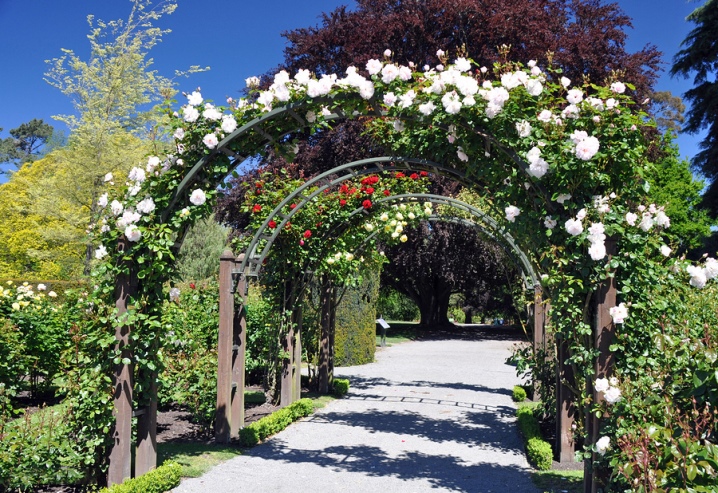
Metal
Many gardeners prefer to make an arch from this material. Simple and reliable fittings are often used... The material is not only reliable - it is also easy to install and has a long service life. Metal can be painted to improve its decorative properties.
The metal structure can have additional elements, usually forged. This improves the aesthetics of the garden even during the winter season.
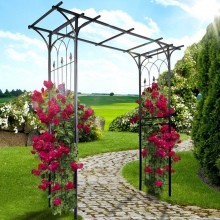
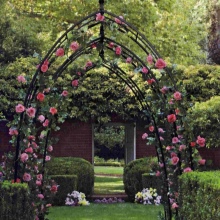
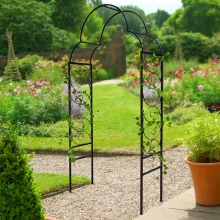
The structure should be inspected a couple of times a year for rust. Damaged metal can harm delicate colors.
Wood
Natural materials are great for landscaping. Wooden arches look very aesthetically pleasing even without decorative coating. It seems that the roses are growing directly from the timber. Moreover, when choosing the right breed, the structure will last quite a long time. A good solution would be larch, which is not afraid of moisture and ultraviolet radiation.
All elements of the arch must be treated with an antiseptic solution. After that, the structure is varnished, in some cases painted, but this is not necessary. Untreated wood can harm the rose. And the service life without protective compounds is significantly reduced.

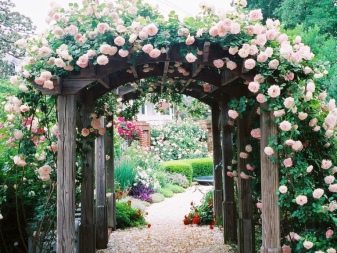
What kind of roses are used?
A blooming arch looks attractive when properly framed. Suitable varieties include White Flat, Dorothy Dennison, Rosa Bleu Magenta Malvern Hills... They are quite unpretentious and easy to care for. Gardeners also choose curly varieties such as Excelsa, American Pillar, and the like for arches.
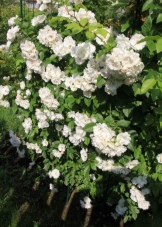

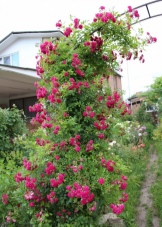
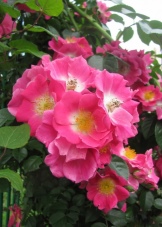
In the case of a spray rose, the distance between plantings should also be taken into account. It will depend on this how luxuriantly the flower grows. The optimal solution is about 1 meter between the bushes. When the rose has gained strength and has grown, then you can divide it into cuttings. Usually, before this, the bush grows on the site for about 2 years.

When decorating an arch with a certain type of rose, the correct planting should also be taken into account. Usually the plant is planted in the spring. For each bush, a hole of about 40x40 cm is needed. For weaving roses, no special soil is required, which simplifies the task. They can be planted fairly close to home in simple garden land.

Immediately after landing, you must enter nitrogen feed... This will give the plant a supply of nutrients for the active growth phase. In summer, fertilizing is usually done with mineral compounds. This care is quite enough for the rose to braid the arched structure beautifully and magnificently.
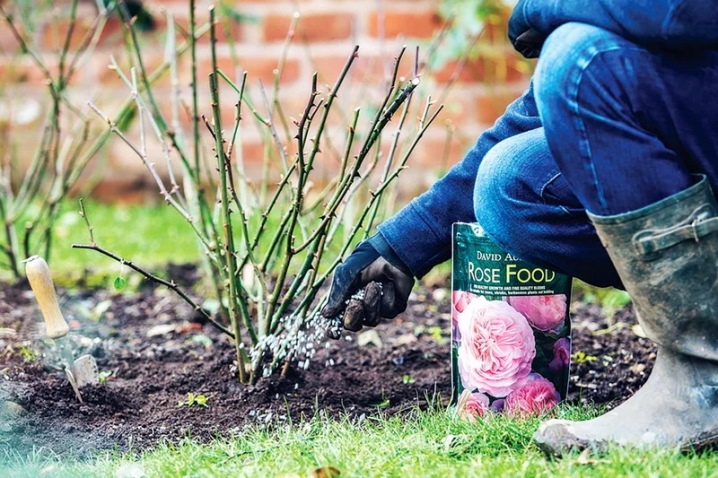
Tips for securing branches
Rose shoots attach diagonally to the vertical bars as the bush grows. It is important not to stack them vertically, otherwise the rose will only grow up, but not wide.... The bush is formed during the growing season. Otherwise, weaving will only go along the supports, but not along the crossbars.
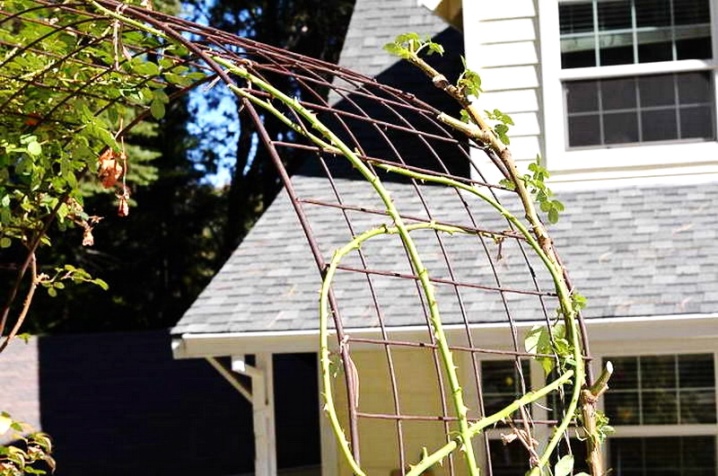
It is important to monitor the emergence of new shoots. They should be tied diagonally to the rail. Later, you can lay the flowers so that the structure of the arch itself is not visible. Only you should act carefully so as not to inadvertently damage the delicate buds.
Examples in landscape design
Garden arches look particularly stunning. And the area is absolutely unimportant - the design is universal.
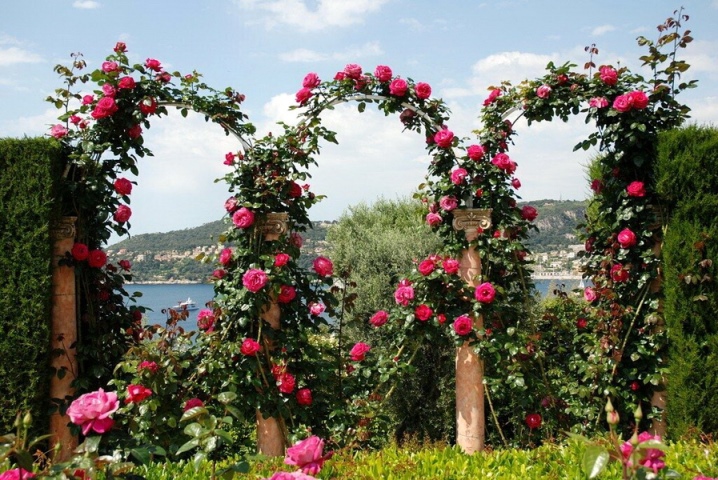
Here are some beautiful examples of arrangement.
- The arch is already well overgrown, the frame itself is not visible. The relaxation area is in the shade and allows you to enjoy the beauty of roses.

- The arches are made from a combination of stone and wood. The design is very attractive, creates shade and is suitable for a large area.
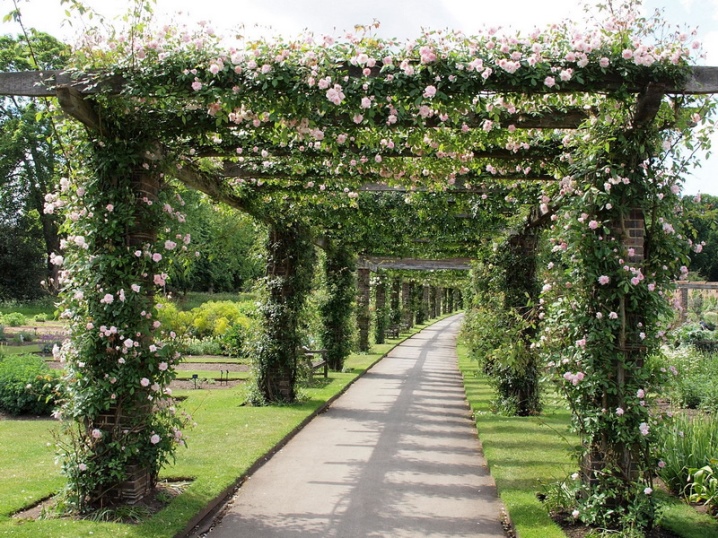
- A metal arch adorns the entrance to the house. The metal structure is well wrapped and in itself laconic, attractive.
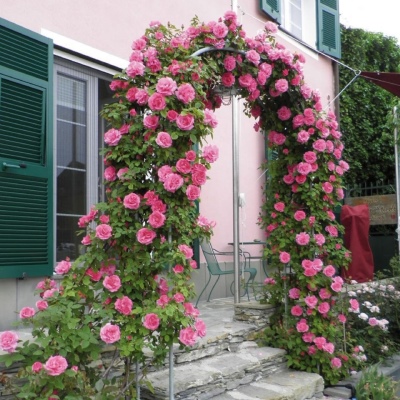
- The arched structure is combined with a fence. This entrance to the garden looks magical.


- A very interesting and attractive solution. A full seating area is located between the two arches.




































































The comment was sent successfully.